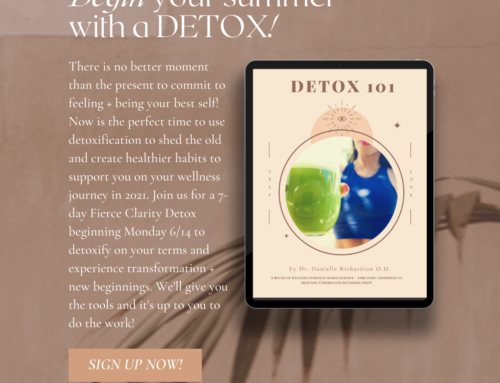[fusion_builder_container background_color=”” background_image=”” background_parallax=”none” enable_mobile=”no” parallax_speed=”0.3″ background_repeat=”no-repeat” background_position=”left top” video_url=”” video_aspect_ratio=”16:9″ video_webm=”” video_mp4=”” video_ogv=”” video_preview_image=”” overlay_color=”” overlay_opacity=”0.5″ video_mute=”yes” video_loop=”yes” fade=”no” border_size=”0px” border_color=”” border_style=”” padding_top=”20″ padding_bottom=”20″ padding_left=”” padding_right=”” hundred_percent=”no” equal_height_columns=”no” hide_on_mobile=”no” menu_anchor=”” class=”” id=””][fusion_builder_row][fusion_builder_column type=”1_1″ last=”yes” spacing=”yes” center_content=”no” hide_on_mobile=”no” background_color=”” background_image=”” background_repeat=”no-repeat” background_position=”left top” hover_type=”none” link=”” border_position=”all” border_size=”0px” border_color=”” border_style=”” padding=”” margin_top=”” margin_bottom=”” animation_type=”” animation_direction=”” animation_speed=”0.1″ animation_offset=”” class=”” id=””][fusion_text]
What is plant-based eating?
“It is food that nourishes the body, mind, and consciousness” – Dr. Vasant Lad
When people talk about plant-based eating, they are typically describing a Whole Food Plant-Based (WFPB) diet.
- Whole Food – Natural, unprocessed + unrefined foods
- Plant-Based – Food derived from plants and not containing animal ingredients.
This diet emphasizes whole, minimally processed foods and limits animal products + food from artificial sources (think added sugars, white flour, and processed oils). When possible, an emphasis is placed on the quality of food — local, organic, sustainably farmed, wild-caught, seasonal, no GMOs, etc (more info here)
Eating in a plant-based way doesn’t mean you are vegan or vegetarian, it simply means the majority of your diet consists of plants including fruits and vegetables, nuts, seeds, oils, whole grains, legumes, and beans. Eating more plant-based foods has no downside but before undertaking a major diet change, consult with your doctor or nutritionist.
NOTE: Take your time reading this post! It’s jam packed full of info and there are free PDF goodies at the end to help you on your plant-based journey. Remember each person is different and will have a unique path. Practice listening to your intuition — It may feel right to start by incorporating one plant-based meal per day into your diet or maybe you dive right in and go 100%. It’s your plant-based experience, so you make the rules 😎
My Journey…
For the past 4 years, I’ve been committed to a plant-based diet and it’s been wonderful! I chose to stop eating meat for health + moral reasons but it took several months/years to make the full transition. Although it’s been a journey, I’m happy because I suffer far fewer IBS symptoms than I used to and I’m healthier + slimmer than I was before. I also have a much better relationship with food than I did in my 20s so I’m grateful for that. In terms of being “plant-based” — I don’t believe in all or nothing so I shoot for an 80/20 mix. I eat plant-based 80% of the time and allow the remaining 20% for eggs, seafood, and occasionally queso, cookies, french fries, or another treat. Life is all about balance 🙂
Why should you consider eating this way?
- Increased Energy + Clarity – A plant-based diet supports your body’s natural metabolic processes and helps it return to equilibrium. As you eliminate and remove toxins from your diet, your body begins to work as it was designed. Because the mind + body are one — when your body is running as it should, so is your brain.
- Weight Loss – Studies have shown those who eat a whole food plant-based diet lose more weight and are able to keep it off compared to those who don’t. (here, here)
- Saving The Planet – Eating plant-based decreases your carbon footprint by decreasing your support of the industrial farming industry, a major producer of greenhouse gases. Decreasing meat or commercially raised animal consumption is as good for the planet as it is for you.
- Less Chronic Illness – Studies also show a plant-based diet can decrease the incidence of chronic diseases, including heart disease and type II diabetes.
- Nutrition – Eating whole foods as nature designed provides exposure to natural vitamins + minerals needed to thrive. The processed foods we eat are devoid of nutrients and, as a result, many adults are unknowing malnourished.
What foods specifically should you eat?
Forks Over Knives made a super handy infographic!

Always:
- Fruits – All whole fruits, as found in nature (not dried, juiced, etc)
- Vegetables – Leafy greens, broccoli, zucchini, eggplant, tomatoes, etc
- Tubers – root vegetables like potatoes, carrots, parsnips, sweet potatoes, beets, etc.
- Legumes – beans of any kind, lentils, pulses, and similar ingredients
- Whole Grains – oats, brown rice, barley, millet, oats, quinoa, wheat berries, 100% whole wheat
Moderation:
- Nuts + seeds + nut butters (including tahini )
- Tofu + tempeh
- Dried fruits
- Whole-grain flours + breads
- Plant-based milks like soy, oat, rice, cashew, hemp, almond (carrageenan-free whenever possible)
Limit:
- Meat + dairy
- Vegan replacement foods including processed and soy-based items like seitan
- Refined sweeteners, oils, bleached flours, white foods: bread, pasta, rice
If supplementing your plant-based diet with animal products, choose quality products from natural grocery stores or farmer’s markets. Look for the following labelings whenever possible.
- Eggs: Cage-free or Pasture-raised
- Poultry: Free-range, organic
- Beef and pork: Pastured or grass-fed
- Seafood: Wild-caught from sustainable fisheries
- Dairy: Organic dairy products from pasture-raised animals
How do I make the switch?
Decide Your Why
Why do you want to make a change in your diet? Do you want to feel better? Decrease your risk of illness? Not support the harsh treatment of animals? Reduce your environmental impact? Getting clear on your why is the motivator that helps you make a lifestyle change. The decision to become plant-based or incorporate more plant-based foods into your diet is personal. Understanding your personal reason creates the foundation for commitment. (See the worksheets below for more)
Get A Plan
Planning ahead is paramount to success with a new plant-based diet. It’s best to be prepared by planning recipes or creating a shopping list before heading to the store. Thankfully, health food stores aren’t the only places where you can find specialty vegetarian, vegan, and plant-based items. Traditional grocery stores have responded to the explosion of consumer health consciousness by increasing their healthy, non-GMO, and organic selections as well. Decide which grocery store option is the best for your needs and give yourself enough time to explore while shopping!
Start With What You Like
Eat the plant foods you like. Ease into the transition by increasing snacking on fruits, nuts, and veggies you already eat. Create salads and meals around the foods you enjoy. The easiest way to eliminate something from your diet is to add more of what you like to it! Consider making healthy swaps for things you love by trying meatless or vegan versions of your favorite meals. Additionally, include more smoothies, green juices, kombuchas, and teas!
Fill Up on Grains + Potatoes
Eating a plant-based diet doesn’t mean salads only! My personal favorite quick meal consists of bowl + grains + veggies + dressing (Recipe HERE). Grains like brown rice, quinoa, or farrow make a great base for colorful veggies like kale, beets, carrots, you name it! There’s endless variety possible so get creative. Potatoes, a filling + hearty staple, can also make a great meal base! Many restaurants offer Buddha or Grain Bowls with potatoes and different grains so give one a try or make one at home!
Whole Foods > Processed Foods
Beware of marketing tactics! Just because something is labeled “Gluten-Free, Non-GMO, Vegan” does not make it good for you. An easy rule of thumb is to avoid packaged foods as they’re typically processed. To eat a more plant-based diet, strive to consume whole foods including fresh, local produce. The closer food is to its natural state, the less likely artificial ingredients + preservatives are present.
Quality Over Quantity
If you’re going to consume animal products, become conscious of what you’re consuming. Choosing animals that were raised humanely is best. Local meats and wild-caught fish are better than industrial farm-raised. Eat less of these foods, but better if you choose to. The old adage “you are what you eat” rings true. Whenever you eat, you are consuming more than just calories because you are also consuming the energetic profile of the food. When you’re eating anything — plant-based or otherwise — the energy of the food becomes a part of you. Ingesting the sadness, sickness, and suffering of commercially farmed animals is not the best route towards feeling good. Whereas, eating plant-based living foods can help you feel more vibrant, healthy, and alive.
Cut Yourself Some Slack
You don’t have to be 100% vegan to eat a more plant-based diet. Life is all about balance! “Everything in moderation” is true and that includes animal products for most of us. Don’t feel the pressure to be all or nothing. ANY changes you make towards living a healthier life are to be celebrated. It’s okay leave space to indulge in desserts, or tacos, or whatever your guilty pleasure! Life is too short to not eat the cupcake.
START NOW!
Download these worksheets to help you get started as you begin living a more plant-based lifestyle!
- My Plant-Based Map – Worksheet to help you gain clarity about your motivations for shed light on potential roadblocks to help you better navigate your journey.
- Grocery Shopping List – Worksheet to help you categorize + plan your shopping trip.
- Plant-Based Recipes – 15+ recipes for breakfast, lunch, dinner to give you inspiration for your meals. While most are 100% plant-based, a few recipes have eggs + salmon. Modify at your discretion 🙂
[/fusion_text][/fusion_builder_column][fusion_builder_column type=”1_1″ last=”yes” spacing=”yes” center_content=”yes” hide_on_mobile=”no” background_color=”” background_image=”” background_repeat=”no-repeat” background_position=”left top” hover_type=”none” link=”” border_position=”all” border_size=”0px” border_color=”” border_style=”solid” padding=”” margin_top=”” margin_bottom=”” animation_type=”0″ animation_direction=”down” animation_speed=”0.1″ animation_offset=”” class=”” id=””][fusion_button link=”https://drive.google.com/file/d/1ax3T4GlAWYRBpdTL32X4ULGoGc9A2v1w/view?usp=sharing” color=”default” size=”” stretch=”” type=”” shape=”” target=”_blank” title=”” gradient_colors=”|” gradient_hover_colors=”|” accent_color=”” accent_hover_color=”” bevel_color=”” border_width=”” icon=”” icon_position=”left” icon_divider=”no” modal=”” animation_type=”0″ animation_direction=”left” animation_speed=”1″ animation_offset=”” alignment=”” class=”” id=””]Download Plant-Based Worksheets Now![/fusion_button][/fusion_builder_column][/fusion_builder_row][/fusion_builder_container]






